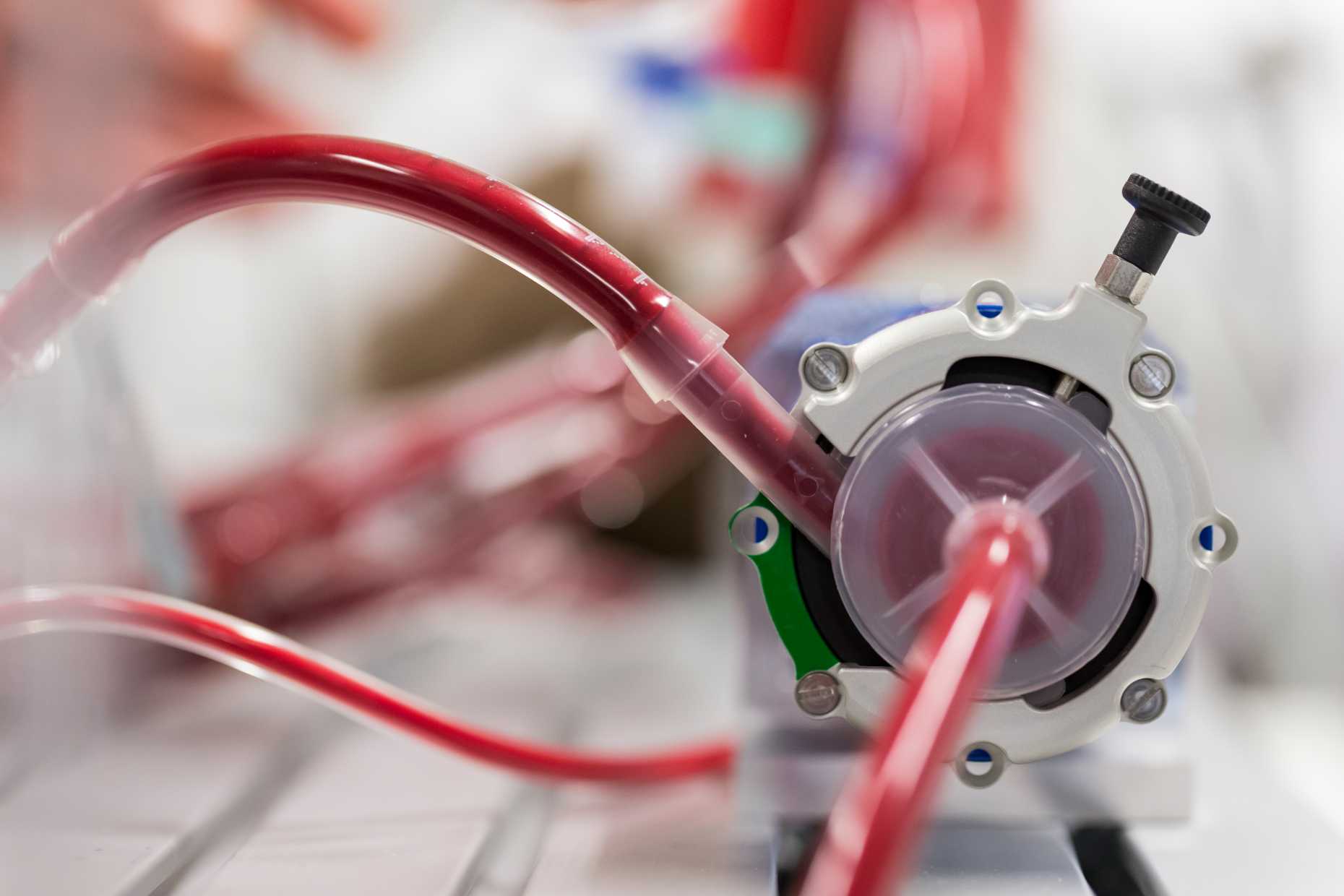Organ Perfusion and Regeneration
Many patients suffering from end-stage organ diseases do not get a transplant in time due to the global organ shortage. Often donor organs cannot even be transplanted due to excessive ischemic damage. This results from insufficient blood and oxygen supply and occurs frequently in organs donated after circulatory death (DCD). Not surprisingly, the use of compromised organs increases the risk of complications after transplantation. Strategies to repair or even regenerate organs outside of the body could increase access to life-saving transplants for patients in need.

Toward this end, we have developed ex vivo organ perfusion systems for long-term maintenance of livers and other organs outside of the body in close collaboration with external page Liver4Life and the University Hospital Zurich with the support of Wyss Zurich. To allow the safe use of DCD organs for transplant, we investigate mechanisms of ischemic reperfusion injury and develop methods to assess organ quality during ex vivo perfusion. The Wyss Perfusion Machine has been used to perfuse discarded human livers and explanted human hemi-livers, and enabled the first transplant of a discarded human liver following long-term normothermic machine perfusion.
Long-term machine perfusion also opens exciting opportunities to repair or even regenerate organs outside of the body by modifying perfusion protocols or through the addition of molecular therapeutics. Precision cut liver slices and organoids are used to pre-screen pro-regenerative therapeutics. We have also adapted the long-term perfusion system for the perfusion of rodent livers for systematic validation of candidate therapeutics or perfusion protocols ex vivo in whole grafts. Manipulating molecular pathways during long-term ex vivo organ perfusion presents many exciting opportunities in basic research and clinical medicine.
People involved: Florian Huwyler, Leslie Cunningham and Jonas Binz
Selected Publications:
[1] Huwyler et al., Adv. Sci., 2023, 2301537
[2] Clavien et al., Nature Biotechnol., 2022, 40,1610-161
[3] Eshmuminov et al., Nature Biotechnol., 2020, 38,189-198